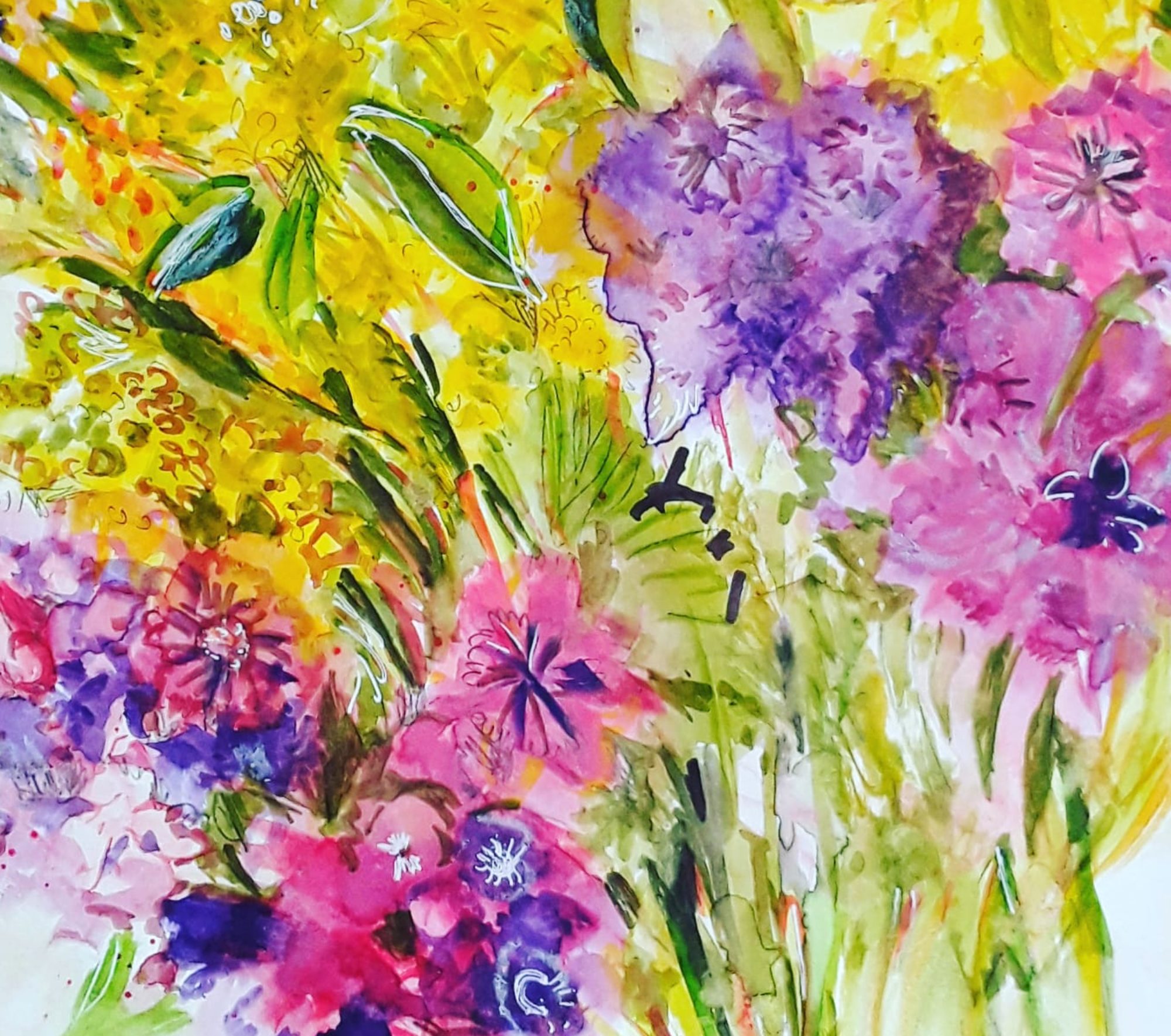
Red for Happiness
Good morning everyone. I finished this bright red abstract in acrylic a couple of weeks ago. And I propped it up on the dining table so that I could look at it everyday. Actually, after all that looking, I’m still not sure what it’s all about! Of course, I am aware that it doesn’t have to be ‘about’ anything. However, I do usually have some ideas on the main themes and so on. Strangely, I don’t in this case, but I do remember that I felt calmer and more settled as I was painting. So, maybe that was its significance, to me anyway.
The Bright Red Abstract, an Earlier Version

As I might have mentioned before, I do now always rotate the painting round as I’m doing an abstract. To be honest, I used to think that this practice was pointless. But I completely changed my mind and now, I find that it helps me to work on each ‘quarter’ individually. Perhaps you noticed that in the image above, I have turned the painting around. It was in fact the first version of the painting in watercolour. Actually, it’s an important part of the development of the piece. Also, it can help to prevent the artist from inadvertently making it into a realistic scene. For example, a landscape or a group of people. But, for me, the most intriguing thing is how the picture does suggest realistic images. Even after all I do to prevent it! And they always come as a complete surprise!
What Can You See ?

Of course, I haven’t talked much about what the viewer sees in this bright, red abstract, which is, of course, very important. So, that’s the deal – I paint it and you make of it what you like! And I hope it makes you feel calmer and more settled too!
As I remember, I wrote a post about red in abstract paintings. Mainly artjournal pages – earlier in lockdown last year. See here.
Incidentally, all my original artwork is for sale at reasonable prices. This one , acrylic on paper and 16 by 12 inches (unframed) is £60 plus shipping. And if you want to treat yourself, go to the Contact Me page and send me an email.



















































































